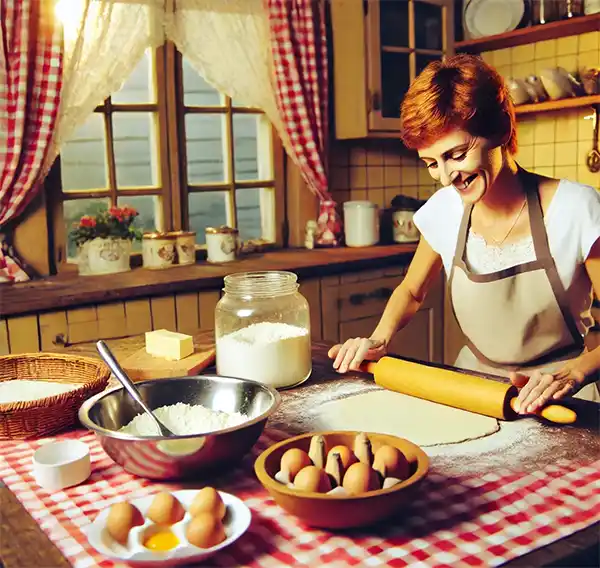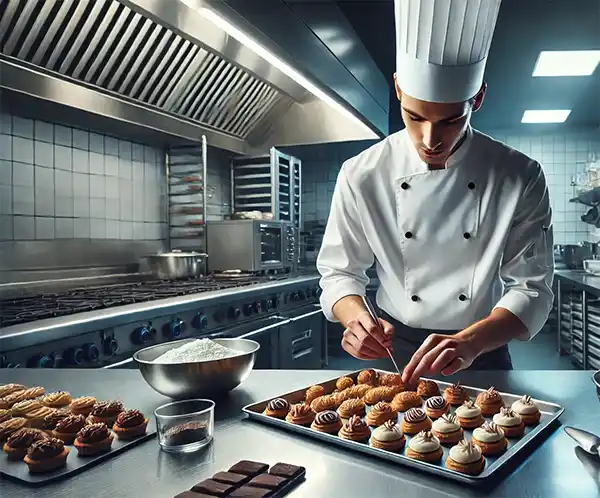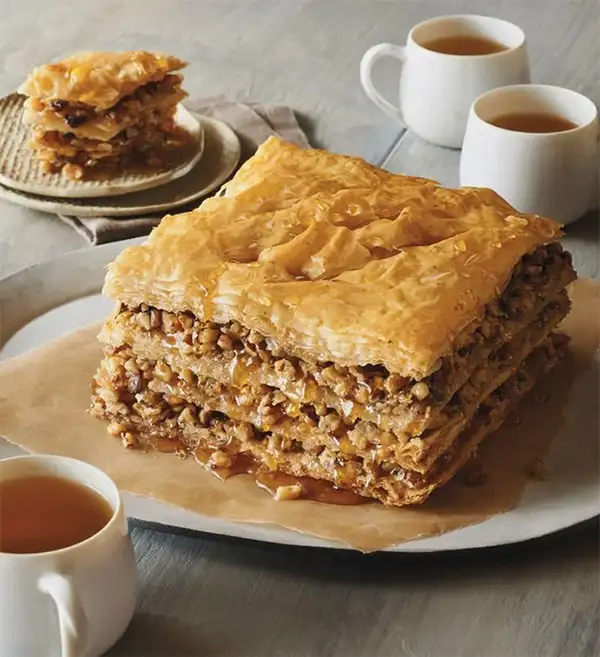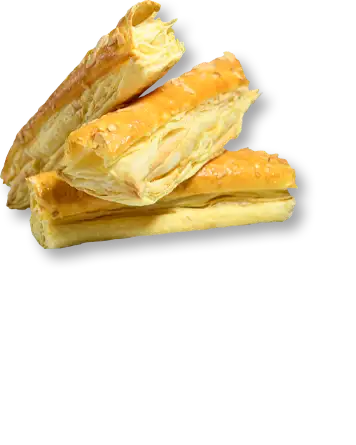A Sweet Celebration of All Things Flaky, Buttery, and Delicious
When December 9 rolls around, it's time to indulge in one of life’s greatest culinary treasures—pastry. National Pastry Day is a celebration of that magical combination of flour, butter, and a little elbow grease (though, let’s hope not literally). From croissants to éclairs, pies to puff pastry, the world of pastry is as vast and diverse as it is utterly irresistible.
From Ancient Times to Modern Treats
Pastry’s story is as rich as its flavors, tracing back thousands of years to some of the earliest civilizations. The ancient Egyptians are thought to have been the first to experiment with a crude version of pastry, using flour and water to create a dough that encased their sweet fillings of honey and nuts. This early form of pastry was both a treat and a practical way to keep ingredients fresh.
Fast forward to ancient Greece and Rome, and pastry had evolved into something more refined. The Greeks developed filo dough, layering it thin enough to let sunlight through, and used it to create desserts like baklava. Meanwhile, the Romans added their own flair, incorporating olive oil and sometimes wine into their doughs, which they baked into rustic cakes and tarts.
 The Middle Ages brought an explosion of creativity to pastry-making, particularly in Europe. It became a staple in the royal courts, where bakers began crafting ornate, savory pies filled with meats, spices, and vegetables. Sugar, still a rare commodity, transformed these doughy creations into sweet treats, marking the beginning of dessert pastries.
The Middle Ages brought an explosion of creativity to pastry-making, particularly in Europe. It became a staple in the royal courts, where bakers began crafting ornate, savory pies filled with meats, spices, and vegetables. Sugar, still a rare commodity, transformed these doughy creations into sweet treats, marking the beginning of dessert pastries.
The Renaissance period saw pastry rise to new heights—quite literally, as puff pastry was developed. This labor-intensive dough, credited to French chefs, became a hallmark of sophistication. The French took pastry to another level, turning it into an art form with the invention of pâte à choux, tarts, and mille-feuille, solidifying their reputation as masters of the craft.
By the 19th century, pastry had become more accessible to the general public, thanks to industrial advances and the proliferation of bakeries. Innovations in equipment and ingredients meant that even home cooks could try their hand at pastry-making. Today, pastry has gone global, with each culture adding its unique twist—whether it’s the empanadas of Latin America, the flaky burek of the Balkans, or the matcha-flavored creations of Japan.
From ancient kitchens to modern patisseries, pastry has journeyed through time, picking up influences and innovations along the way. Its history is a testament to humanity’s creativity, resourcefulness, and unrelenting love for something sweet and satisfying.
The Good, the Flaky, and the Delicious
Pastries come in two main categories: laminated and non-laminated. For those not fluent in baker-speak, laminated pastries have all those buttery layers—croissants and puff pastry, for example. Non-laminated pastries are less about the layers and more about richness, like pie crusts and shortcrust pastries.
Here’s a quick (and delicious) breakdown:
- Puff Pastry: The show-off of the pastry world. Its hundreds of buttery layers puff up in the oven like magic. It’s used for everything from danishes to beef Wellington.
- Shortcrust Pastry: The dependable workhorse. This crumbly, tender dough is perfect for pies and tarts.
- Choux Pastry: The pastry that puffs up but doesn’t use yeast. It’s responsible for éclairs, cream puffs, and gougères. (Bless its airy heart.)
- Filo Pastry: This paper-thin dough gives us baklava and spanakopita, proving that good things come in very delicate packages.
 A Global Smorgasbord
A Global Smorgasbord
Every culture has its own pastry creations, each more tempting than the last. Here are a few global stars:
- France: The undisputed pastry capital. Croissants, éclairs, and tarts are just the tip of the iceberg.
- Italy: Cannoli, sfogliatelle, and cornetti make breakfast a deliciously sweet affair.
- Greece: Filo dough stars in baklava, a dessert so sweet it should come with a warning label.
- Mexico: Conchas and empanadas bring vibrant flavors to the pastry table.
- Japan: From delicate mochi pastries to matcha-flavored treats, Japanese pastry is a blend of art and taste.
Pastry is a culinary marvel that perfectly marries precision and creativity. It’s an edible symphony where each ingredient plays its part, and every technique contributes to the final masterpiece. The science of pastry is fascinating: cold butter creates those signature flaky layers, the right balance of liquid ensures a tender crust, and just the right baking temperature makes magic happen in the oven.
But pastry isn’t just a technical achievement—it’s a heartfelt experience. Each bite carries a memory: grandma’s perfectly golden apple pie, the buttery croissant from that little café on vacation, or the chocolate éclair that cheered you up after a tough day. Pastry speaks a universal language of comfort, celebration, and indulgence.
And let’s not forget its versatility. Pastry can be sweet, savory, or somewhere in between. It can dress up for a fancy soirée as a mille-feuille or keep things casual as a hand pie. Whether it’s the gooey decadence of a sticky bun or the crisp crackle of a perfect tart shell, pastry has a way of turning even an ordinary moment into a special occasion. It’s not just food—it’s a love letter written in butter and flour.
Celebrating National Pastry Day
How can you make the most of this delicious day? Here are some ideas:
- Bake Your Own: Channel your inner pastry chef and try making something from scratch. (Pro tip: Keep a fire extinguisher handy if you’re new to laminated doughs.)
- Visit a Bakery: Support your local bakery by indulging in their creations. Bonus points if you order something you’ve never tried before.
- Host a Pastry Party: Invite friends and family to sample pastries from around the world. Don’t forget the coffee or tea!
- Experiment: Ever tried making savory pastries? Think samosas, pasties, or quiches.
Even the best pastry chefs started somewhere, and that somewhere probably included dough that wouldn’t roll out, crusts that shrank in the oven, or puff pastry that puffed in all the wrong places. So, if your attempt at making croissants looks more like a buttery crime scene, don’t despair—you’re just one National Pastry Day away from perfection.
 Pastry Wisdom to Live By
Pastry Wisdom to Live By
Pastry isn’t just a treat for the taste buds—it’s a source of inspiration and a metaphor for life. From its delicate layers to its buttery richness, there’s plenty of wisdom to be gleaned from these flaky delights.
- “Life is uncertain. Eat dessert first.” Pastry is the ultimate proof that this is excellent advice.
- “A day without pastry is like a day without sunshine.” Okay, nobody really said that, but it’s definitely true.
So this National Pastry Day, take a moment to appreciate the culinary magic that is pastry. Whether you’re indulging in a slice of pie, savoring a flaky croissant, or bravely attempting to make your own puff pastry, remember: life is better with butter, flour, and a touch of sweetness.
Please Share our Content






 The Middle Ages brought an explosion of creativity to pastry-making, particularly in Europe. It became a staple in the royal courts, where bakers began crafting ornate, savory pies filled with meats, spices, and vegetables. Sugar, still a rare commodity, transformed these doughy creations into sweet treats, marking the beginning of dessert pastries.
The Middle Ages brought an explosion of creativity to pastry-making, particularly in Europe. It became a staple in the royal courts, where bakers began crafting ornate, savory pies filled with meats, spices, and vegetables. Sugar, still a rare commodity, transformed these doughy creations into sweet treats, marking the beginning of dessert pastries. A Global Smorgasbord
A Global Smorgasbord Pastry Wisdom to Live By
Pastry Wisdom to Live By








 "Sláinte!" is a traditional Irish expression used as a toast, equivalent to "Cheers!" in English.
"Sláinte!" is a traditional Irish expression used as a toast, equivalent to "Cheers!" in English.